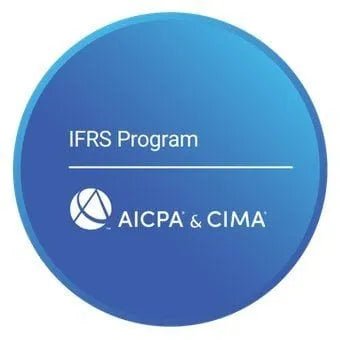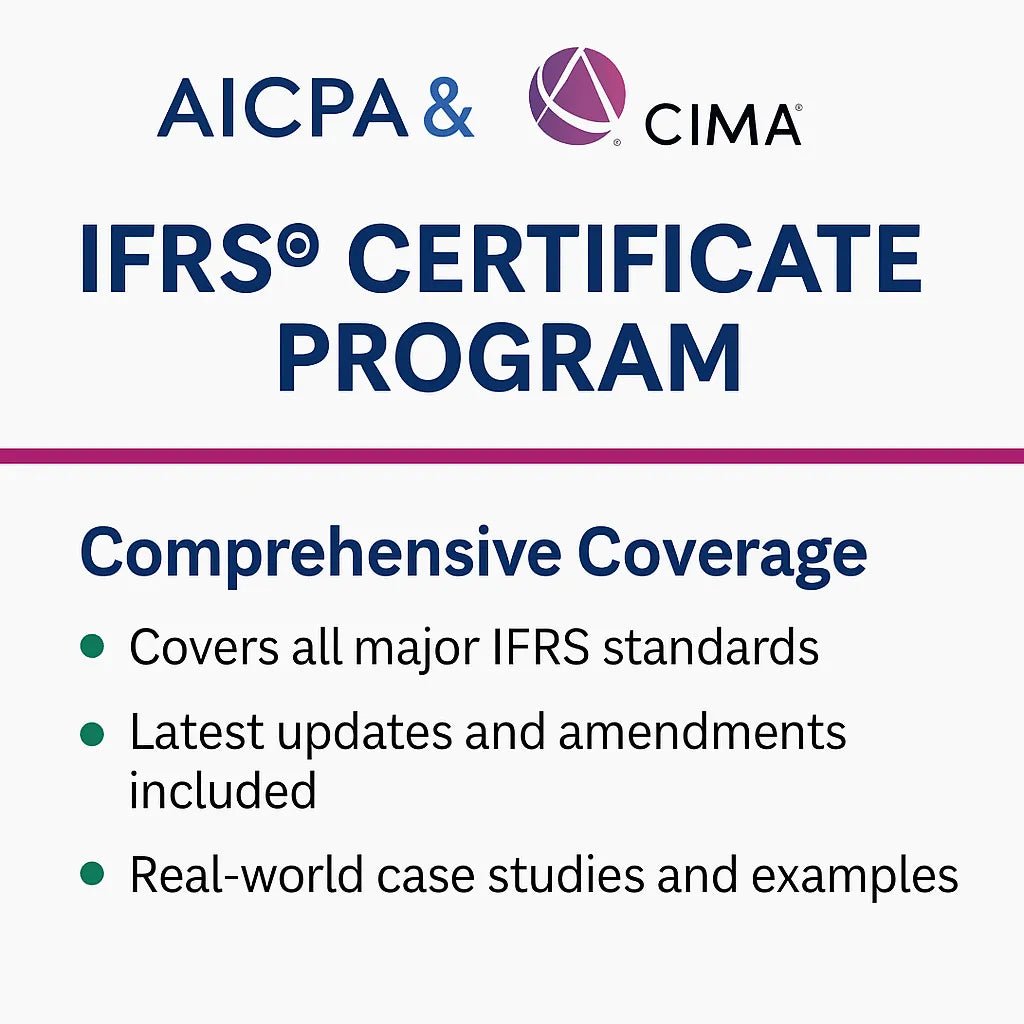Master DipIFR Subsidiary Disposals & IFRS 5
Disposal of Subsidiaries: Discontinued Operations Demystified
DipIFR consolidation scenarios involving subsidiary disposals represent some of the most technically demanding questions in the examination. The December 2024 examiner's report specifically noted that while most candidates made "reasonable attempts" at disposal calculations, fundamental errors in net assets computation and goodwill treatment significantly impacted final marks. Understanding these complexities is crucial for examination success and builds upon the foundational principles explored in our guide to Goodwill Impairment: The Most Misunderstood DipIFR Topic.
The Fundamental Challenge: What Constitutes Net Assets?
The Share Capital Oversight
Recent examiner feedback consistently highlights one critical error: candidates omitting share capital from net assets calculations. This seemingly minor oversight cascades through the entire disposal computation, affecting both the gain/loss calculation and the derecognition entries.
Complete Net Assets Components:
- Share capital (often forgotten)
- Retained earnings at disposal date
- Other components of equity
- Revaluation reserves
- Translation reserves (where applicable)
Why Share Capital Matters
Share capital represents the foundational equity contribution that, combined with retained earnings and other equity components, comprises the total book value being disposed of. Its omission understates the carrying amount of the investment being sold.
Impact on Calculations:
Disposal Consideration $XX
Less: Net Assets Disposed $(XX) ← Understated without share capital
Less: Goodwill (net of impairment) $(XX)
Less: Non-controlling Interest $(XX)
Gain/(Loss) on Disposal $XX ← Overstated gain or understated loss
This systematic error often compounds with goodwill treatment mistakes, creating significant marking penalties that could be avoided through proper understanding of disposal accounting principles.
Goodwill Treatment in Disposals: Avoiding the Grossing-Up Trap
The Unnecessary Complication
The DIPIFR examiner's report noted candidates "unnecessarily grossing up the goodwill on acquisition" in disposal calculations. This error suggests confusion between impairment testing procedures and disposal accounting.
Key Distinction:
- Impairment Testing: May require grossing up when NCI measured at proportionate share
- Disposal Calculations: Use actual recorded goodwill (net of accumulated impairment)
This distinction becomes crucial when subsidiaries have undergone multiple impairment tests prior to disposal, as detailed in our comprehensive analysis of goodwill complexities.
Correct Goodwill Treatment
Step 1: Identify original goodwill Step 2: Account for any cumulative impairment Step 3: Use net goodwill in disposal calculation
Example:
- Original goodwill: $2,000,000
- Cumulative impairment to disposal date: $500,000
- Goodwill for disposal calculation: $1,500,000
The Impairment Adjustment Requirement
Critical Oversight Pattern
Examiner reports frequently mention candidates failing to account for goodwill impairment occurring prior to disposal. This represents a failure to understand that disposal calculations must reflect the carrying amounts at the disposal date, not original amounts.
Systematic Approach to Impairment
Pre-Disposal Checklist:
- Review all impairment testing performed since acquisition
- Calculate cumulative impairment losses
- Determine net goodwill carrying amount
- Apply this net amount to disposal calculation
Worked Example:
Background: Subsidiary acquired January 1, 20X1. Goodwill impairment of $300,000 recognized in 20X2. Additional impairment of $150,000 in 20X4. Disposal occurs December 31, 20X4.
Goodwill Movement:
Original goodwill (Jan 1, 20X1) $1,500,000
Impairment 20X2 (300,000)
Impairment 20X4 (150,000)
Carrying amount at disposal $1,050,000
Discontinued Operations: IFRS 5 Complexity
Classification Criteria
Not all subsidiary disposals qualify as discontinued operations. IFRS 5 requires the disposed component to represent either:
- A separate major line of business
- A geographical area of operations
- Part of a coordinated disposal plan
The Major Line of Business Test
Quantitative Indicators:
- Significant portion of revenues (typically >10%)
- Separate cash flows identifiable
- Distinct operational management
- Different customer bases or markets
Timing of Classification
Key Requirements:
- Held for sale classification must occur before disposal
- Management commitment to disposal plan essential
- Active marketing to potential buyers required
- Sale completion expected within 12 months
Comprehensive Disposal Calculation Framework
Mid-Year Disposal Complications
DipIFR consolidation questions frequently feature disposals occurring mid-period, requiring careful attention to:
- Pre-disposal results inclusion
- Post-disposal exclusion
- Proportionate consolidation periods
Step-by-Step Calculation Process
Step 1: Determine Net Assets at Disposal Date
Share capital $X
Retained earnings (at disposal) $X
Other equity components $X
Total net assets $X
Step 2: Calculate Group Share Being Disposed
Net assets × Ownership percentage $X
Add: Goodwill (net of impairment) $X
Less: Fair value adjustments $(X)
Group carrying amount $X
Step 3: Determine Disposal Consideration
Cash received $X
Deferred consideration (PV) $X
Total consideration $X
Step 4: Calculate Gain/Loss
Disposal consideration $X
Less: Group carrying amount $(X)
Gain/(Loss) on disposal $X
Advanced Scenarios and Complications
Foreign Currency Subsidiaries
Disposal of foreign operations requires additional considerations:
- Cumulative translation differences recycling
- Exchange rate movements between agreement and completion
- Hedging relationships termination
Additional Entry Required:
Dr. Cumulative Translation Reserve $X
Cr. Gain/Loss on Disposal $X
Partial Disposals
When ownership reduces but control remains, the transaction represents a partial disposal requiring:
- Proportionate derecognition of carrying amounts
- Recognition of change in NCI
- No gain/loss recognition (equity transaction)
Contingent Consideration
Disposal agreements often include earn-out provisions requiring careful measurement:
- Probability-weighted expected values
- Discounting to present value
- Subsequent remeasurement through profit or loss
Presentation and Disclosure Requirements
Income Statement Classification
Continuing Operations:
- Gain/loss on disposal
- Pre-disposal subsidiary results
Discontinued Operations:
- Subsidiary results for the period
- Gain/loss on disposal
- Separately presented single line item
Comparative Period Adjustments
Prior year comparatives require restatement to show:
- Continuing operations excluding disposed subsidiary
- Discontinued operations including disposed subsidiary
- Clear segregation maintained throughout
Common Examination Traps
The Proportionate Consolidation Error
Some candidates incorrectly apply proportionate consolidation to the disposal calculation, failing to recognize that disposal affects 100% of the subsidiary relationship.
The Fair Value Adjustment Confusion
Post-acquisition fair value movements (revaluations, impairments) require careful tracking to ensure disposal calculations reflect actual carrying amounts.
The NCI Calculation Mistake
When calculating disposal gains/losses, the NCI component must be properly derecognized based on their carrying amount, not their proportionate share of consideration received.
Practical Examination Techniques
Spreadsheet Organization
Recommended Worksheet Structure:
- Summary Sheet: Overview of disposal transaction
- Net Assets Movement: Tracking from acquisition to disposal
- Goodwill Analysis: Original cost, impairments, net amount
- Disposal Calculation: Step-by-step gain/loss computation
- P&L Impact: Continuing vs discontinued classification
Time Management Strategy
Subsidiary disposal questions typically carry 6-8 marks in DipIFR consolidation scenarios. Allocate approximately 12-15 minutes to ensure:
- Complete net assets identification
- Proper goodwill treatment
- Accurate gain/loss calculation
- Correct presentation classification
Cross-Referencing Requirements
Link all disposal workings to:
- Consolidated statement of financial position adjustments
- Consolidated statement of profit or loss presentations
- Cash flow implications (if required)
Study Resources for Complex Scenarios
Complex disposal scenarios require extensive practice with varied circumstances. The comprehensive BPP DipIFR Study Text and Practice Kit provides detailed coverage of disposal calculations, discontinued operations criteria, and presentation requirements.
The integrated approach of these materials ensures candidates understand how disposal accounting connects with other consolidation topics, including goodwill impairment testing, inter-company transaction eliminations, and foreign currency translation effects.
For systematic revision of disposal procedures, DipIFR Pass Cards offer decision trees and calculation frameworks that help navigate the complexity highlighted in examiner feedback. These quick-reference materials prove particularly valuable when working through multi-step disposal calculations under exam time pressure.
Learning from Top Performers
Success with complex disposal scenarios requires more than memorizing calculation steps. Top-performing candidates consistently emphasize systematic approaches and deep understanding of underlying principles. The insights shared in ACCA DIPIFR world topper experiences highlight several critical success factors:
Strategic Preparation Elements:
- Mastery of basic consolidation principles before attempting complex scenarios
- Systematic practice with timed disposal calculations
- Understanding interconnections between disposal accounting and other IFRS standards
- Development of clear, logical working paper structures
Many successful candidates also benefit from comprehensive preparation programs. Consider structured learning through professional DipIFR training resources that provide both theoretical depth and extensive practical application across all consolidation complexities.
Professional Practice Applications
Real-World Disposal Complexity
Professional practice involves additional complications beyond examination scenarios:
- Regulatory approval requirements
- Tax implications and planning
- Employee transfer obligations
- Customer contract assignments
- Warranty and indemnity provisions
Due Diligence Considerations
Disposal transactions require thorough analysis of:
- Historical financial performance
- Outstanding litigation or contingencies
- Environmental liabilities
- Pension obligations
- Intellectual property transfers
Post-Completion Adjustments
Purchase price adjustments based on:
- Completion date net assets
- Working capital adjustments
- Debt/cash normalization
- Warranty claim provisions
Strategic Preparation Approach
Building Foundation Knowledge
Success with disposal scenarios requires solid understanding of:
- Basic consolidation principles
- IFRS 5 held for sale criteria
- IFRS 10 control assessment
- IAS 21 foreign currency translation
Progressive Skill Development
Level 1: Simple disposal calculations Level 2: Mid-year disposals with discontinued operations Level 3: Partial disposals and control changes Level 4: Complex scenarios with multiple complications
For candidates seeking comprehensive support at competitive rates, explore discounted DipIFR study packages that combine high-quality study materials with practical guidance. These resources provide the depth of coverage necessary for mastering complex disposal scenarios while offering excellent value for comprehensive exam preparation.
Integration with Other Consolidation Topics
Subsidiary disposals rarely occur in isolation within DipIFR consolidation questions. They frequently combine with:
Goodwill Complexities
- Previous impairment testing results affecting disposal calculations
- NCI measurement method implications for goodwill treatment
- Cash-generating unit considerations in multi-subsidiary disposals
Inter-company Transaction Effects
- Elimination reversal requirements upon loss of control
- Unrealized profit adjustments in disposed subsidiaries
- Outstanding inter-company balances requiring settlement
Foreign Currency Impacts
- Translation reserve recycling through profit or loss
- Exchange rate effects on disposal consider
FAQs
ACCA blogs
Follow these links to help you prepare for the ACCA exams
IFRS blogs
Follow these blogs to stay updated on IFRS
Formats
Use these formats for day to day operations
- Account closure format
- Insurance claim letter format
- Transfer certification application format
- Resignation acceptance letter format
- School leaving certificate format
- Letter of experience insurance
- Insurance cancellation letter format
- format for Thank you email after an interview
- application for teaching job
- ACCA PER examples
- Leave application for office
- Marketing manager cover letter
- Nursing job cover letter
- Leave letter to class teacher
- leave letter in hindi for fever
- Leave letter for stomach pain
- Leave application in hindi
- Relieving letter format
Interview questions
Link for blogs for various interview questions with answers
- Strategic interview questions
- Accounts payable interview questions
- IFRS interview questions
- CA Articleship interview questions
- AML and KYC interview questions
- Accounts receivable interview questions
- GST interview questions
- ESG Interview questions
- IFRS 17 interview questions
- Concentric Advisors interview questions
- Questions to ask at the end of an interview
- Business Analyst interview questions
- Interview outfits for women
- Why should we hire you question
leave application format
- Leave application for office
- Leave application for school
- Leave application for sick leave
- Leave application for marriage
- leave application for personal reasons
- Maternity leave application
- Leave application for sister marriage
- Casual leave application
- Leave application for 2 days
- Leave application for urgent work
- Application for sick leave to school
- One day leave application
- Half day leave application
- Leave application for fever
- Privilege leave
- Leave letter to school due to stomach pain
- How to write leave letter
Insurance blogs
- Sample letter of appeal for reconsideration of insurance claims
- How to increase insurance agent productivity
- UAE unemployment insurance
- Insurance cancellation letter
- Insurance claim letter format
- Insured closing letter formats
- ACORD cancellation form
- Provision for insurance claim
- Cricket insurance claim
- Insurance to protect lawsuits for business owners
- Certificate holder insurance
- does homeowners insurance cover mold
- sample letter asking for homeowner right to repair for insurance
- Does homeowners insurance cover roof leaks













Leave a comment